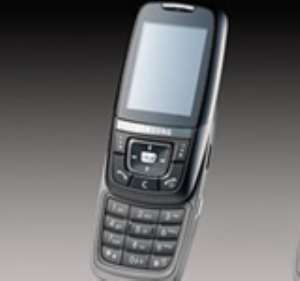
Some 300 million sophisticated phones compatible with New Generation Mobile Networking (NGMN) comprising third generation (3G and 3.5G) and fourth generation (4G) phones will be sold every year by 2013, a report from European business intelligence providers, Juniper Research has forecast.
The report, which is available on the Juniper Research website, said smart phones would account for 23 per cent of all new handsets sold per annum by the same year, while the sale of less sophisticated handsets was expected to fall drastically.
It noted that the expected increase in demand for smart phones would be due to fast rising demand for the complex multimedia-centric applications, which was forcing handset manufacturers to design increasingly smart and highly personalised mobile devices.
“Device vendors are already seeing falling margins on handset sales and need to diversify into service provision with high-value content from which they and their network operator partners can profit,” it said.
The report said pricing was also becoming more attractive and “consumers have come to believe that they will get more for their money by buying high-end devices.”
“Very soon the majority of new phones will be smart phones,” the report said.
It also forecast a recession in handset sales between now and 2013, during which the demand for and sale of smart phones would still remain healthy as fewer mid-range devices like Global System for Mobile communications (GSM) and Enhanced Data rates for Global Evolution (EDGE) phones compete for buyers' attention.
The report noted that the driving interest in smart phones would be the proliferation of online stores selling specialised applications that would make the hi-tech handsets better suited to individual user needs.
It cited the runaway success of Apple's App Store, which reportedly recorded 300 million downloads of applications by iPhone users within five months of its launch, saying that underscored the rapidity with which smart phones were being adopted by ordinary consumers.
The report said due to the success of the Apple App Store, players such as Nokia, RIM and Google had also jumped into the applications market, adding that vendors had also opened up the operating system software on their devices to enable more handsets to become personalised internet-centric mobile computers.
“In this way users are having an indirect impact on the way in which devices are changing their form and function as well as how they interact with their surroundings,” the report said.
In January this year alone, two of the six multinational mobile telecom operators in Ghana, MTN and Zain launched 3.5G technology offering permanent high speed internet connectivity with video, music, games and other downloads, video calls and video conferencing services to customers.
Vodafone Ghana also signed a US$120 million contract with Huawei for the supply of 3.5G technology. Meanwhile, Tigo and Globacom have also received separate licenses for 3.5G technology.
While the telecom companies in Ghana seem to be moving in the right direction as per the Juniper Research Report, a Ghanaian-based telecom expert who spoke with the GNA said owing to the complexity and relatively high cost of new generation devices and service vis-a-vis the generally low income levels and high illiteracy rate in Ghana, not many Ghanaians were likely to access 3.5G.
He estimated that should each of the five operators with 3.5G license spend US$120 million on 3.5G technology, like Vodafone was said to have done so far, “that will be US$600 million chasing a few sophisticated subscribers estimated around 100,000”.
The expert therefore urged the operators to focus on services and technologies that the greater majority of current and potential customers could easily relate to in terms of usability and affordability.




 Akufo-Addo spotted ordering chiefs to stand for his handshake
Akufo-Addo spotted ordering chiefs to stand for his handshake
 Akufo-Addo ‘disrespects’ every chief in Ghana except Okyenhene — NDC Communicato...
Akufo-Addo ‘disrespects’ every chief in Ghana except Okyenhene — NDC Communicato...
 Supreme Court clears way for dual citizens to hold key public positions
Supreme Court clears way for dual citizens to hold key public positions
 Be transparent, don’t suppress the truth – Prof. Opoku-Agyemang to Jean Mensa
Be transparent, don’t suppress the truth – Prof. Opoku-Agyemang to Jean Mensa
 ‘I won’t tell the world I was only a driver’s mate during challenges’ – Prof Jan...
‘I won’t tell the world I was only a driver’s mate during challenges’ – Prof Jan...
 We’ll prosecute corrupt officials of Akufo-Addo’s govt – Prof Jane Naana
We’ll prosecute corrupt officials of Akufo-Addo’s govt – Prof Jane Naana
 [Full text] Acceptance speech by Prof Jane Naana Opoku-Agyemang as 2024 NDC Runn...
[Full text] Acceptance speech by Prof Jane Naana Opoku-Agyemang as 2024 NDC Runn...
 Election 2024: Don’t be complacent, we haven’t won yet – Asiedu Nketia cautions ...
Election 2024: Don’t be complacent, we haven’t won yet – Asiedu Nketia cautions ...
 Election 2024: Stop fighting over positions in Mahama’s next govt – Asiedu Nketi...
Election 2024: Stop fighting over positions in Mahama’s next govt – Asiedu Nketi...
 Prof Jane Naana Opoku-Agyemang will restore dignity of vice presidency – Fifi Kw...
Prof Jane Naana Opoku-Agyemang will restore dignity of vice presidency – Fifi Kw...
